I’m Salik Waquas, a film colorist with a passion for dissecting cinematography and color grading to unravel what makes certain films visually extraordinary. I’ve worked on numerous post-production projects across different formats, and my fascination with the craft extends beyond my work into writing about it. One film that has left an indelible mark on my imagination is The Wolf of Wall Street by Martin Scorsese. With its bold storytelling and extravagant visuals, this Scorsese-Prieto collaboration is a cinematic feast I couldn’t resist diving into.
In this article, I’ll break down the cinematography of The Wolf of Wall Street, sharing my analysis of Rodrigo Prieto’s techniques and decisions that brought this film to life. From the lighting to the use of camera movements, let’s explore how Prieto’s artistry perfectly aligns with Jordan Belfort’s wild and chaotic world.
About the Cinematographer

Rodrigo Prieto, a cinematographer I deeply admire, was the genius behind the lens of The Wolf of Wall Street. His unique ability to blend naturalistic lighting with dynamic, extravagant camera movements gave the film a distinctive visual language that brilliantly mirrored the hedonistic excess of its narrative. Prieto’s previous works, like Brokeback Mountain and Silence, reflect his versatility as a storyteller through visuals, but his collaboration with Martin Scorsese on this film really took things up a notch. Prieto was tasked with capturing the dizzying rise and fall of Jordan Belfort, and he did so with a style that felt flamboyant yet intimate.
What stands out most about Prieto’s approach here is how he crafted visual chaos while ensuring we never got lost in the extravagance. The film’s chaotic narrative, filled with extreme angles, energetic tracking shots, and frenetic editing, was supported beautifully by the cinematography. Anamorphic lenses played a pivotal role in achieving a distinct look, distorting the viewer’s perception just enough to evoke Jordan’s increasingly skewed view of the world.
Inspiration for the Cinematography of The Wolf of Wall Street

The inspiration for The Wolf of Wall Street is heavily drawn from Martin Scorsese’s own earlier works, particularly Goodfellas and Casino. Just as in those films, this one tells the story of a morally corrupt character’s ascent and inevitable decline, and Rodrigo Prieto channeled that spirit into his visual choices. The dynamic camera movements, expressive lighting, and even some of the framing choices are reminiscent of the gangster epics that Scorsese is known for—only this time, the gangsters are Wall Street brokers.

Prieto has often mentioned how the excess of the 1980s and 1990s influenced the visual palette, and it shows. Over-the-top colors, flashy aesthetics, and an energy that mirrored the state of perpetual intoxication were essential in portraying Belfort’s lifestyle. The vibrant, almost gaudy color scheme was a fitting way to mirror the constant euphoria and chaos of this world. Fast zooms, frenetic edits, and dramatic shifts between full-scale shots of lavish parties and tight close-ups contributed to both the allure and ugliness of the wealth on display.
Camera Movements Used in The Wolf of Wall Street
If there’s one thing that stands out about The Wolf of Wall Street, it’s the high-energy camera movements. Prieto and Scorsese opted for a combination of Steadicam, dolly, and handheld shots to create a sense of immersion that perfectly matched the film’s exuberant tone. The camera rarely stops moving, a technique that reflects the rollercoaster ride of emotions and excesses experienced by Jordan Belfort.

Take, for example, the dolly shots that track Belfort as he marches through the bustling Stratton Oakmont office. These shots create an unbroken flow, making the viewer feel like they’re right there with Belfort, experiencing his charisma and power. It’s almost like the famous Copacabana scene from Goodfellas, where the audience is taken on a mesmerizing one-shot journey. The camera seems to dance with the characters during moments like the outrageous office parties, capturing the chaos and vibrancy of their environment.

On the other hand, Prieto often used shaky, handheld shots in scenes where Jordan is intoxicated or under the influence of drugs. This frenetic camera work is particularly effective in the infamous Quaalude scene, where Jordan’s lack of control is amplified by the exaggerated and unstable camera movements. These choices allowed the audience to feel as though they were sharing in his disoriented, unhinged state.
Compositions in The Wolf of Wall Street

The compositions in The Wolf of Wall Street play an essential role in conveying the excess, power dynamics, and underlying vulnerability of the characters. Prieto’s ability to fill frames with action and clutter, particularly in the office scenes, visually illustrates the uncontrollable nature of Jordan’s empire. The office, teeming with brokers, papers, and frantic movement, feels chaotic—a fitting reflection of the frenzied culture at Stratton Oakmont.
Close-ups are used extensively, highlighting the characters’ emotional states and personal stakes. They make us feel Jordan’s unrestrained ambition, his manipulative charm, and his self-destructive tendencies. There’s also a remarkable contrast between the claustrophobic shots in the office and the open, opulent settings of Belfort’s mansion or yacht. This contrast speaks to his dual life—the bravado of his public persona and the vulnerability that lurks beneath the surface.

I found Prieto’s use of symmetrical compositions particularly striking. In scenes where Jordan addresses his employees, symmetry amplifies his perceived control and authority, elevating him to almost a god-like status in the eyes of his followers. As Jordan’s life unravels, however, these rigid compositions give way to more chaotic and off-balance shots, symbolizing the collapse of his world.
Lighting Style of The Wolf of Wall Street
Lighting is one of the most critical tools in a cinematographer’s arsenal, and Prieto’s work in The Wolf of Wall Street is no exception. He used a mix of natural and artificial lighting to craft a duality that reflects Jordan’s life—one filled with artificial opulence, and another, darker reality lurking underneath. There are moments where the lighting tells its own story, adding depth to the character dynamics.

A standout example is Prieto’s use of upstage and downstage lighting. Upstage lighting, which gives depth and sculpting to characters’ faces, was employed to create aesthetically pleasing, almost heroic looks. But when Prieto needed to convey tension or discomfort, as in some of the restaurant scenes, he switched to downstage lighting, flattening Jordan’s face and making the moment feel much more intimate and unnerving.
In the office scenes, Prieto employed top lighting, creating a sterile environment that feels right at home in a corporate setting. It’s harsh, uninviting, and almost transactional—perfect for a high-stress trading floor where everything is about money, power, and survival.
Lensing and Blocking of The Wolf of Wall Street
The lens choices were key in defining the film’s visual narrative. Prieto used anamorphic lenses extensively, which gave the film a unique look. The subtle distortion inherent to these lenses was a great way to amplify the hedonism and almost surreal nature of Belfort’s world. The shallow depth of field helped to isolate Jordan amidst the chaos, a visual reminder of his singular focus and state of mind.

Blocking was another crucial aspect of Prieto’s cinematographic approach. In scenes at the office, actors are often placed diagonally to create depth, with multiple layers of action occurring in the frame simultaneously. This unconventional blocking kept scenes dynamic, ensuring that the viewer’s eye was constantly engaged, picking out different elements within the frame.
Color Grading of The Wolf of Wall Street

As a colorist, the color grading of The Wolf of Wall Street is especially intriguing to me. The warm, vibrant color palette—with golds and yellows dominating—was clearly designed to evoke the excess and wealth of Belfort’s world. The warmth imbued a nostalgic glow, as though we were witnessing a golden age of excess. The office scenes, for instance, are bathed in a golden hue that suggests an almost regal atmosphere—a kingdom where Jordan reigns supreme.

But Prieto’s color grading didn’t stop at just representing excess. Cooler tones crept in during moments of vulnerability or threat. As Jordan’s empire began to crumble, the scenes became colder, with blues and desaturation creating an atmosphere of impending doom. The shift from the warm golds of Jordan’s heyday to the cold blues of his fall underscores the thematic shift from unchecked indulgence to a harsh reality.
During scenes depicting drug use, Prieto used more vibrant, almost psychedelic colors, pulling the audience into Jordan’s euphoric, altered state. These shifts in color grading serve as an emotional roadmap, guiding the viewer through the ups and downs of Jordan’s journey.
The Wolf Of Wall Street Film Stills
A curated reference archive of cinematography stills from The Wolf Of Wall Street. Study the lighting, color grading, and composition.

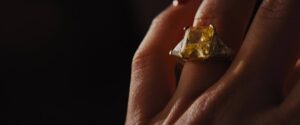

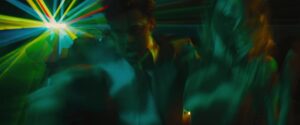

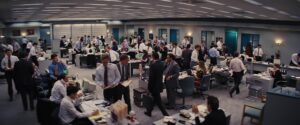
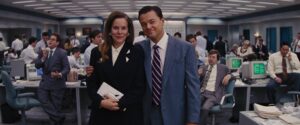
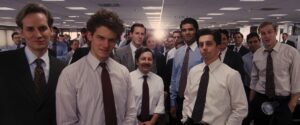

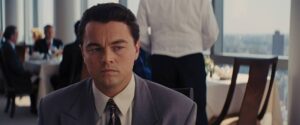

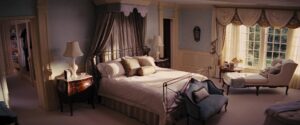
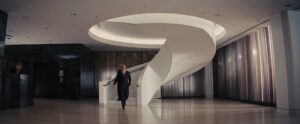
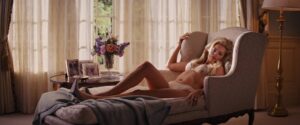
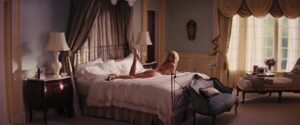


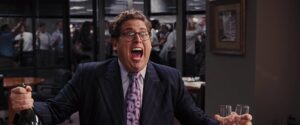
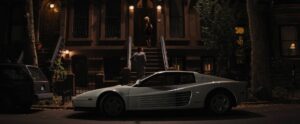
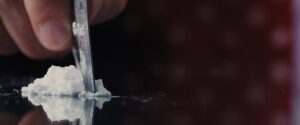
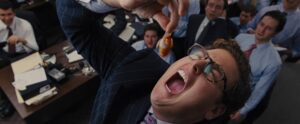
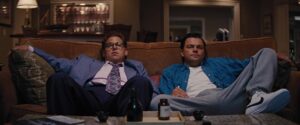
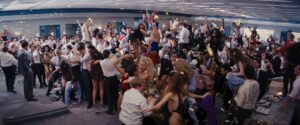

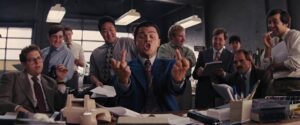

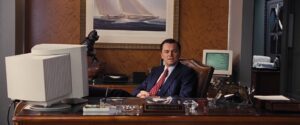
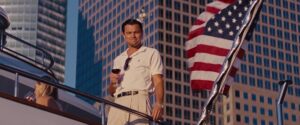
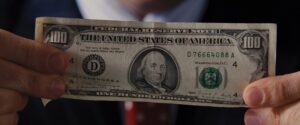

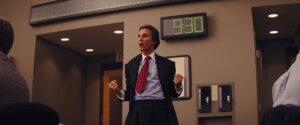
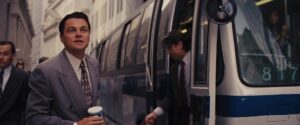





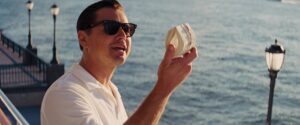
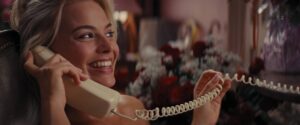
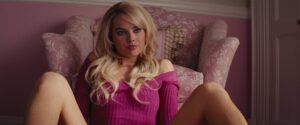


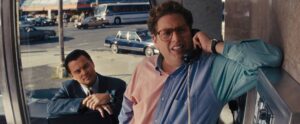
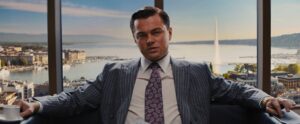
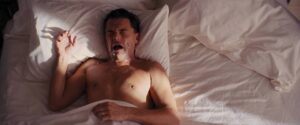

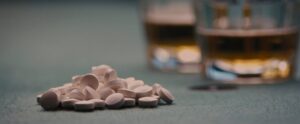

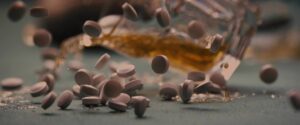
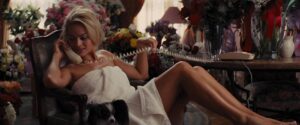
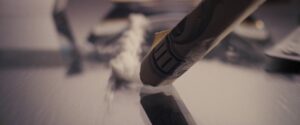


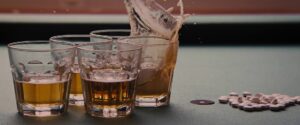
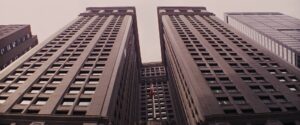
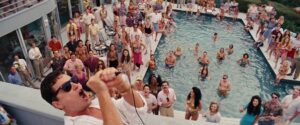

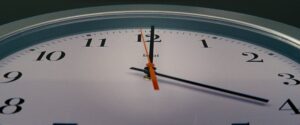
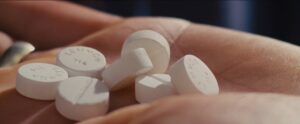
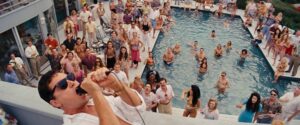
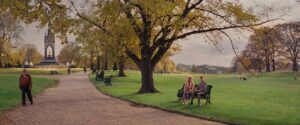




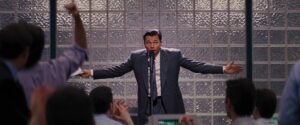

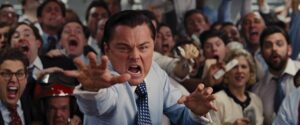

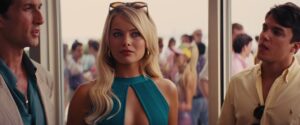
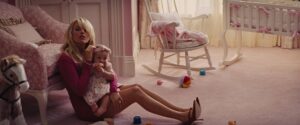

Conclusion
Rodrigo Prieto’s cinematography in The Wolf of Wall Street is nothing short of spectacular. Every decision, from the high-energy camera movements to the rich, thematic color grading, contributes to a film that’s not just about Belfort’s rise and fall, but also about the excesses that define human greed. Prieto captured the spirit of the film in every frame, allowing the audience to experience the euphoria, the chaos, and ultimately the unraveling of Jordan Belfort’s world. As a colorist and a film enthusiast, I can’t help but admire the level of craft that went into making every visual element serve the larger story so effectively.
- Also Read: CINEMATOGRAPHY ANALYSIS OF CHILDREN OF MEN (IN-DEPTH)
- Also Read: CINEMATOGRAPHY ANALYSIS OF IN THE MOOD FOR LOVE (IN-DEPTH)
Browse Our Cinematography Analysis Glossary
Explore directors, cinematographers, cameras, lenses, lighting styles, genres, and the visual techniques that shape iconic films.
Explore Glossary →